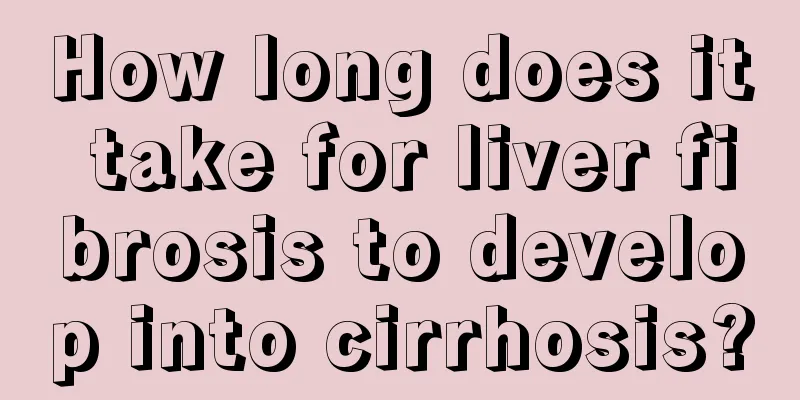What are the treatments for lung cancer? The best treatments for lung cancer

|
Everyone is very afraid of lung cancer and thinks it is an incurable disease. In fact, this understanding is incorrect. As long as we detect the early symptoms of lung cancer in time and receive treatment immediately, lung cancer can still be controlled. Here are some options for treating lung cancer. (I) Treatment principles. The principle of comprehensive treatment should be adopted, that is, according to the patient's physical condition, the cytological and pathological types of the tumor, the scope of invasion (clinical stage) and the development trend, a multidisciplinary comprehensive treatment (MDT) model should be adopted, and surgery, chemotherapy, radiotherapy and biological targeting and other treatment methods should be used in a planned and reasonable manner, in order to achieve the purpose of radical cure or maximum control of the tumor, improve the cure rate, improve the patient's quality of life, and prolong the patient's survival. At present, the treatment of lung cancer is still mainly surgical treatment, radiotherapy and drug therapy. (B) Surgical treatment. 1. Principles of surgical treatment. Surgical resection is the main treatment for lung cancer and the only way to cure lung cancer clinically. Lung cancer surgery is divided into radical surgery and palliative surgery, and radical resection should be strived for. In order to achieve the best and thorough removal of the tumor, reduce tumor metastasis and recurrence, and conduct the final pathological TNM staging to guide postoperative comprehensive treatment. For surgically resectable lung cancer, the following surgical principles should be followed: (1) A comprehensive treatment plan and necessary imaging examinations (clinical staging examinations) should be completed before non-emergency surgical treatment. The feasibility of surgical resection should be fully evaluated and a surgical plan should be developed. (2) Complete removal of the tumor and regional lymph nodes should be achieved as much as possible, while preserving functional healthy lung tissue as much as possible. (3) Video-assisted thoracoscopic surgery (VATS) is a minimally invasive surgical technique that has developed rapidly in recent years and is mainly suitable for patients with stage I lung cancer. (4) If the patient's physical condition permits, anatomical lung resection (lobectomy, bronchial sleeve lobectomy or pneumonectomy) should be performed. If the patient's physical condition does not permit, limited resection should be performed: segmentectomy (preferred) or wedge resection, or VATS can be selected. (5) Complete resection (R0 surgery) In addition to complete resection of the primary lesion, routine resection of the hilar and mediastinal lymph nodes (N1 and N2 lymph nodes) should be performed and the locations should be marked for pathological examination. At least three lymph nodes in the mediastinal drainage area (N2 station) should be sampled or cleared, and the entire lymph node should be removed as much as possible. The recommended right chest clearance range is: 2R, 3a, 3p, 4R, 7-9 lymph nodes and surrounding soft tissues; the left chest clearance range is: 4L, 5-9 lymph nodes and surrounding soft tissues. (6) During the operation, the pulmonary veins and pulmonary arteries are treated in sequence, and finally the bronchi. (7) Sleeve lobectomy preserves as much lung function (including bronchus or pulmonary blood vessels) as possible, provided that rapid pathological examination during the operation ensures that the resection margin (including the bronchus, pulmonary artery or vein stump) is negative. The quality of life of patients after surgery is better than that of patients undergoing pneumonectomy. (8) For patients with recurrence or isolated lung metastasis 6 months after complete resection of lung cancer, resection of the remaining lung on the recurrent side or resection of the lung metastasis lesion can be performed if distant extrapulmonary metastasis is excluded. (9) Patients in stages I and II who are assessed to be unable to undergo surgery due to their cardiopulmonary function and other physical conditions can be treated with radical radiotherapy, radiofrequency ablation, and drug therapy. 2. Indications for surgery. (1) Stage I, II and some stage IIIa (T3N1-2M0; T1-2N2M0; T4N0-1M0) non-small cell lung cancer and some small cell lung cancer (T1-2N0~1M0). (2) N2 non-small cell lung cancer that has responded to neoadjuvant therapy (chemotherapy or chemotherapy plus radiotherapy). (3) Some patients with stage IIIb non-small cell lung cancer (T4N0-1M0) can undergo complete local resection of the tumor, including invasion of the superior vena cava, other adjacent large blood vessels, atrium, and carina. (4) Some patients with stage IV non-small cell lung cancer with single contralateral lung metastasis, single brain or adrenal gland metastasis. (5) For pulmonary nodules that are highly suspected of lung cancer but cannot be qualitatively diagnosed after various examinations, surgical exploration may be considered. 3. Contraindications to surgery (1) Patients whose general condition cannot tolerate surgery, and whose important organs such as heart, lung, liver, and kidney cannot tolerate surgery. (2) The vast majority of clearly diagnosed stage IV, most stage IIIb, and some stage IIIa non-small cell lung cancers, as well as small cell lung cancers with a stage later than T1-2N0-1M0. (III) Radiotherapy. Radiotherapy for lung cancer includes radical radiotherapy, palliative radiotherapy, adjuvant radiotherapy and preventive radiotherapy. After reading the above article, you will understand how to treat lung cancer. Here we would like to remind you that both surgery and chemotherapy will cause considerable harm to the patient's body and bring great pain. Therefore, the patient's family must be careful in the process of caring for the patient and not cause new pain to the patient. |
Recommend
What are some tips to make your mouth smaller
Some people are very strict about their facial ap...
What are the treatments for testicular cancer patients
Testicular cancer is a common men's disease, ...
What are the most important early symptoms of nasopharyngeal cancer
Among the diseases in the oncology department, na...
Can patients with teratoma have children?
The best option for treating teratoma is surgical...
Are black beans effective for hair growth?
Black beans are a common ingredient, and they als...
What medicine should I take for arrhythmia
The heart is a major organ in the human body. If ...
What to do if wool sweater pilling
Clothes made of wool are usually soft and warm, b...
What are the symptoms of mercury poisoning?
Thermometers are a must-have item for most famili...
Can liver cancer be cured if it has metastasized?
Can liver cancer be cured if it has metastasized?...
Why does my buttocks itch at night?
In people's daily lives, there will be some d...
How many lines on the pregnancy test stick indicate pregnancy
With the development of medical technology in mod...
Abdominal mass is a symptom of colon cancer
Colon cancer is a common disease, so it is crucia...
Why does my stomach hurt after defecation?
Normally, we should not feel any discomfort in th...
Experts focus on the key points of prostate cancer care
In real life, in order to achieve better treatmen...
What causes filiform warts? This is the correct way to care for them
Filiform warts are a type of wart disease caused ...









